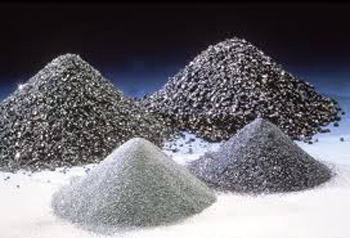
Abrasive grains undergo heavy process in different degrees, from very superfine to very coarse. Whether you are working on metal or wood, the right grit of abrasive grains is essential for finishing the job.

According to Wikipedia, an abrasive is a material, often a mineral, that is used to shape or finish a workpiece through rubbing which leads to part of the workpiece being worn away. Abrasives are extremely commonplace and are used very extensively in a wide variety of industrial, domestic, and technological applications. Common uses for abrasives include grinding, polishing, buffing, honing, cutting, drilling, sharpening, lapping, and sanding.
Abrasive grains undergo heavy process in different degrees, from very superfine to very coarse. Whether you are working on metal or wood, the right grit of abrasive grains is essential for finishing the job. The factory starts with bauxite and naturally occurring mineral that resembles clay. The bauxite is blended with other minerals, then released into an electric arc furnace to heat the mix to over 3600 degrees Fahrenheit. That's hotter than an active volcano. Then a technician takes a sample for chemical analysis. If everything is right, the multi-minerals are poured into a big steel pan and transported to a cooling area. 24 hours later, with the materials hardened, it's time to bring the ball that cracks open the hardened materials by being dropped repeatedly to break up the hardened minerals.
Next the minerals are transported to a conveyor system. Then crushers break them up into fixed sizes. There are multi-layer screens that make some kind of shaking. The mineral particles go through the screen with the largest mesh first, then continues smaller sizes. The coarse abrasive grains will be used for rough sanding jobs. The smaller the grain, the finer the finish. The finest abrasive grains can be watched through microscope.
The next step is to inspect the grain shape. A sample is poured into a cup and then it's weighed. A higher weight means the bigger density stack. A different test is to use miniscale grits. The particles are suspended in an solution that allows inspectors to count and evaluate the grits via computer. Finally, the abrasive grains are ready to be packed.
To know more about how abrasive grains are made, you can refer to the video on YouTube at: https://www.youtube.com/watch?v=uv-CbotruaI.
Author: Liwei Chu
Copyright: iAbrasive.com--Abrasives & Diamond Tools Market